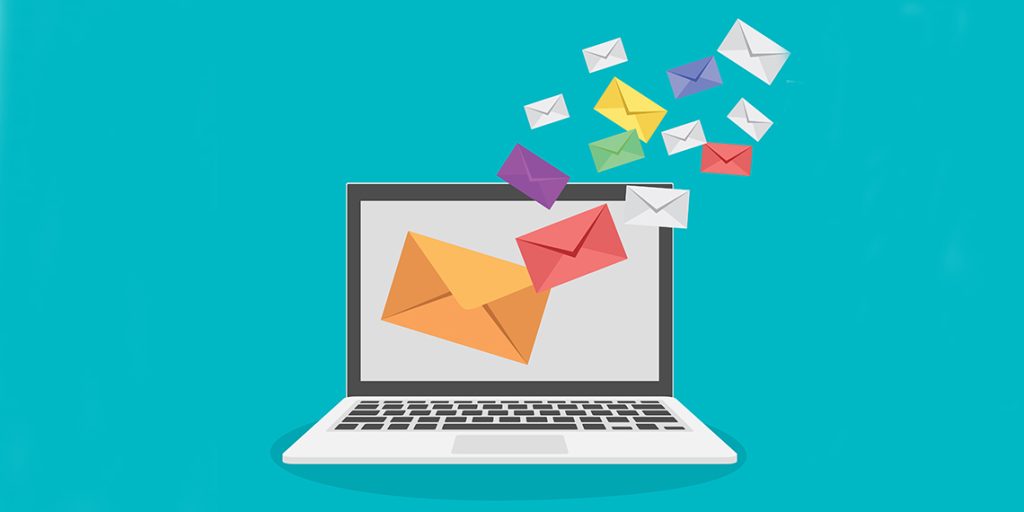If you’ve been tracking your business’ revenue lately and you’re worried about the slide that’s starting to form, a good idea is to try a different tact in your marketing. If you’re not doing email marketing already, then that’s a great place to start.
Despite the rise of social media and other digital marketing channels, email marketing continues to hold as one of the most effective ways to reach and connect with your B2B audience. Email remains a direct, cost-effective, and highly customisable way to communicate with existing and potential customers.
In this article, we look at the benefits of email marketing to your lead generation in a bit more detail and explore three different strategies to try.

Why email marketing works for B2B lead gen
Email marketing has remained effective, especially for B2B all this time for a number of reasons. In summary, it’s a direct line to each one of your audience where you can customise your messaging for the exact person receiving it. Through valuable content, product info and exclusive offers, you can take control over the buyer’s journey; massaging leads through to making a purchase decision.
Below are three strategies to consider in your email marketing effort, as well as some general tips when setting up your emails for lead generation activity.

Make it personal
You know as well as I do that no one is bothering with an email starting with ‘Dear Customer’. Personalisation is key in making your emails stand out in a crowded inbox. It’s certainly not the be-and-end-all, but it does make it feel that someone, not some system, is behind the email at least.
This is where data is hugely important. Make sure you’re collecting the right data through your sign-up forms, website interactions, and past purchases to personalise emails properly. Not only will this help you communicate to your leads like they’re people, but this will inform what you send them. You’ll be able to show your recipient product recommendations they’ll like, and content tailored to the their interests or industry. Use segmentation to make sure they’re getting information that is relevant to where they are in the buyer’s journey (no use sending product recommendations when they’re still researching).
For example, for a lead who recently read an article on your website about paddock soil fertility, you might send an email recommending some products that help soil quality or further reading. You could follow up with and a case study of an agri-business that benefited from using said product. This actually leads us nicely into another highly recommended, time-saving approach…
Save the busywork with marketing automation
Marketing automation (sometimes known as ‘drip campaigns’ or some other name, depending on the platform you’re using) basically does what it says; it automates your marketing emails. It allows you to create a sequence of emails that are sent out based on specific triggers or timelines. They’re effective at nurturing leads through common flows while you can focus on more important tasks, like closing.
Someone who visits my landing page for industrial generators may get a follow up email highlighting product benefits. I can design my sequence to tailor the next email based on how the user interacts with this email. If they clicked through but didn’t purchase, an email will send a couple of days later with an exclusive offer to get them over the line. Or if they didn’t click through, another email sends customer testimonials or a case study to see if they engage. As you can see, the sequences you build can be as simple or as complex as you like.
Foster interest with your newsletters
Give your audience reason to sign up by offering something you can’t get as a regular website patron. Offer exclusive content and promos that actually add value for your audience. Being in the B2B space, you have an opportunity to establish authority and trust by sharing industry insights and developments and even commentary.
Unlike a marketing automation flow, which works to get a recipient to perform a specific action, great newsletters keep your business top of mind for your potential leads. However, the two work together really effectively. Newletters provide that value and grow engagement. This then dovetails into your marketing automation strategy when your readers click through and interact with your landing pages. This allows you to hone-in on what they’re interested in and nurture them through the funnel.
Five things to remember in email marketing

Mobile first. Most emails are read on a phone, so layout considerations, tests and checks should be done on a phone first. Worry about the desktop version second.
What do you want me to do? It should be abundantly clear how I can take the next step as a recipient. Include a clear, compelling, call-to-action (and it doesn’t just go at the bottom).
Test, optimise, repeat. Good digital marketing is never ‘spray and walk away’ unfortunately. Regularly test different elements of your emails (subject lines, content, layout, CTAs, styles, colours, etc.) to see what works best and continuously optimise based on that performance data.
Stay compliant. It’s all well and good to have an outstanding email campaign, but it’s no good to anyone if you’re standing out in the spam folder. Do a bit of research and make sure you adhere to email marketing regulations and relevant anit-spam acts to not only stay in the good books with email platforms, but build trust and maintain a positive relationship with your audience.
Use a platform that works for you. There’s loads of platforms that make it easy for you to send email campaigns out, but as far as bigger-picture solutions go, Klaviyo and Dotdigital are the top contenders here.
You’d be silly not to
As a B2B business owner, investment into email marketing will pay dividends. Email marketing offers personalised and targeted content that’s measurable and helps you optimise. Collect good data at the outset to make each communication count, utilise marketing automation to scale your efforts, and bring your audience value through newsletters. If you do this correctly, you’ll end up with a heaving sales funnel all through a single channel. Remember, email marketing following the same key tenet as content marketing: value. If you’re providing value at every touchpoint, you’re taking an opportunity to strengthen your relationship with your audience and move them closer to a purchase decision.
BY CRAIG RUNDLE
Director at Tin Soldier
Craig, Founder and Director at Tin Soldier lives and breathes digital. Being slightly geeky, since the late 90’s he has been involved and watched the internet grow from one page websites through Web 2.0 and more recently with the advent of AI technologies. Craig’s passion is ecommerce, in particular creating great customer experiences through personalisation, content and connected systems.
